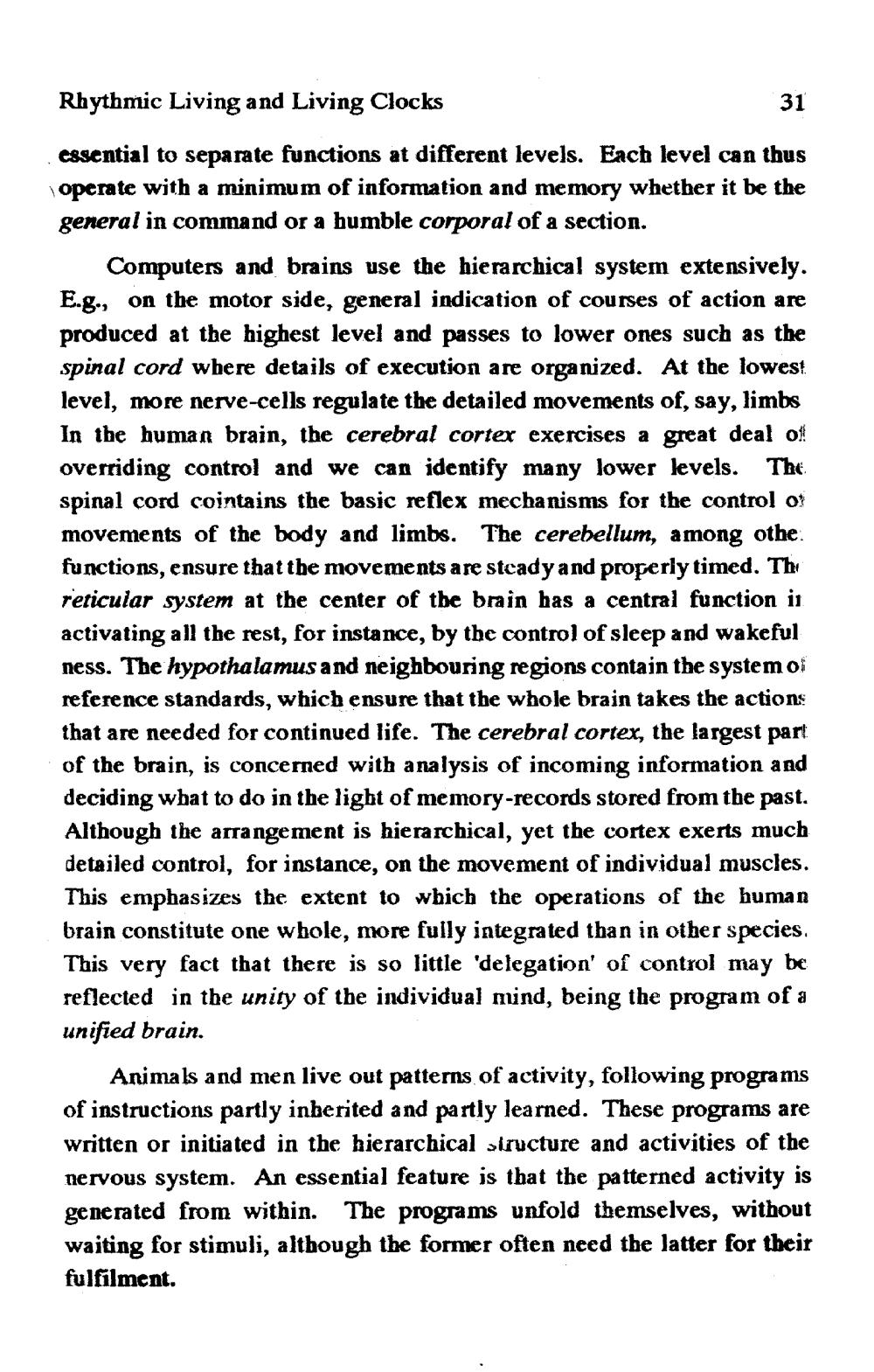________________
Rhythmic Living and Living Clocks
31
essential to separate functions at different levels. Each level can thus operate with a minimum of information and memory whether it be the general in command or a humble corporal of a section.
Computers and brains use the hierarchical system extensively. E.g., on the motor side, general indication of courses of action are produced at the highest level and passes to lower ones such as the spinal cord where details of execution are organized. At the lowest level, more nerve-cells regulate the detailed movements of, say, limbs In the human brain, the cerebral cortex exercises a great deal of overriding control and we can identify many lower levels. The spinal cord cointains the basic reflex mechanisms for the control of movements of the body and limbs. The cerebellum, among othe. functions, ensure that the movements are stcady and properly timed. The reticular system at the center of the brain has a central function in activating all the rest, for instance, by the control of sleep and wakeful ness. The hypothalamus and neighbouring regions contain the system of reference standards, which ensure that the whole brain takes the actions that are needed for continued life. The cerebral cortex, the largest part of the brain, is concerned with analysis of incoming information and deciding what to do in the light of memory-records stored from the past. Although the arrangement is hierarchical, yet the cortex exerts much detailed control, for instance, on the movement of individual muscles. This emphasizes the extent to which the operations of the human brain constitute one whole, more fully integrated than in other species. This very fact that there is so little 'delegation of control may be reflected in the unity of the individual mind, being the program of a unified brain.
Animals and men live out patterns of activity, following programs of instructions partly inherited and partly leamed. These programs are written or initiated in the hierarchical siructure and activities of the nervous system. An essential feature is that the patterned activity is generated from within. The programs unfold themselves, without waiting for stimuli, although the former often need the latter for their fulfilment.




